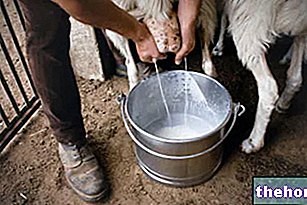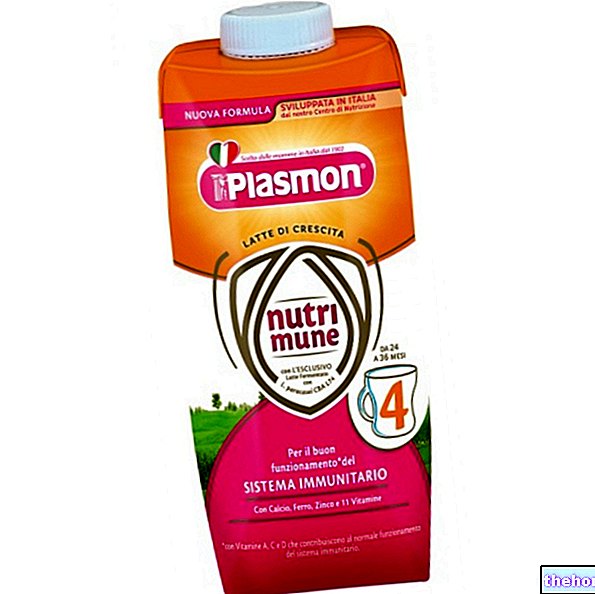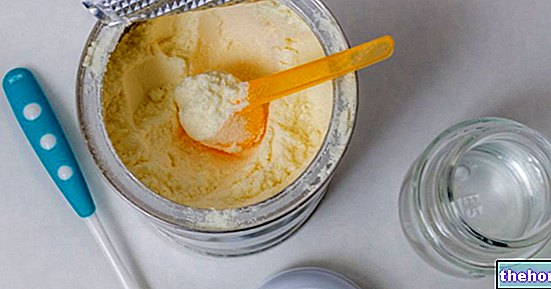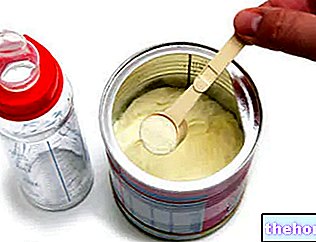Generality
Pecorino is a cheese made from sheep's milk; in particular, it is a hard sheep cheese, since its humidity is less than 40%.

NB. The wording "Roman" and "Toscano" refers to a type of PDO processing that can also be carried out outside the specified range, but in any case in well-defined neighboring areas; this peculiarity is determined by the fact that both the raw material and the manufacturing process of these two cheeses give rise to an almost similar product ALSO just outside the native area.
Production
The production of pecorino varies according to the type of cheese and the area of origin; therefore, below we will try to list the main phases without excluding or omitting any essential steps:
- The production of pecorino begins, of course, with the milking of the sheep
- The milk obtained from milking is highly perishable and can develop "prematurely" some colonies of unwanted bacteria or in any case unsuitable for the success of the pecorino itself; for this reason, the milk is suitably stored raw at 4 ° C until processing, or it is treated with temperatures ranging from 68 to 72 ° C depending on the type of pecorino. NB. If on the one hand the heat treatment of raw milk favors the healthiness of the raw material, on the other it compromises some of its nutritional and organoleptic properties.
- This is followed by the correction of the milk fat content (skimming), since the pecorino is obtained by eliminating part of the lipid component and proportionally increasing the protein component (nutrient that is more suitable for the maturing process).
- Only at this point does the rest or maturation of the milk take place, which allows a spontaneous multiplication of the natural bacterial flora useful for acidification (process called "natural grafting"), and which is almost always reinforced with the addition of a manually inoculated biological starter. (process called "selected graft"). The bacterial proliferation determines a protein coagulation of the caseins (which, forming a network, retain a good part of the fats), which represent the basis for maturing the pecorino; the liquid component of milk (whey) is instead excluded.
- However, the ferments of pecorino are not sufficient to determine a satisfactory lactic coagulation, therefore curdling is necessary (addition of rennet, a liquid rich in acids and coagulating enzymes, contained in the stomach of calves, lambs and kids); curdling, which takes place at a temperature of 38-40 ° C, gives rise to the curd.
- Pecorino is a cooked or semi-cooked cheese and this means that, after breaking the curd (process of mixing the coagulated milk), it is necessary to impose a heat treatment of 15-20 "at 45-58 ° C.This form of cooking, associated with the stirring of the curd, is necessary to further dehydrate the dough which further agglomerates and excludes excess whey; moreover, the high temperature reached appropriately selects the bacteria useful for maturing (called thermophilic because they resist these temperatures). The broken curd is then pressed.
- What remains is presented as a single large block (of proteins, fats and lactose) which is cut into blocks, placed in special molds and stored in the places of maturation (hot and humid) where the acidification of the pasta takes place.
- After cooling, generally, the branding and salting take place, followed by a rest period in cool but very humid rooms.
- Finally, we proceed with the actual seasoning, which takes place in cooler but not very humid environments.
Nutritional characteristics
Pecorino is a hard cheese, therefore it is a food deriving from processed and concentrated animal milk; specifically, it is a more or less skimmed, seasoned and salty product, all processes that give it some important nutritional characteristics.
First of all, we specify that pecorino is made from sheep's milk and that, despite being partially skimmed, it has an initial lipid content higher than that of cow's milk; furthermore, by eliminating the serous component during processing, pecorino (like most other cheeses) does NOT make use of the proteins and lactose it contains. The concomitance of these two factors determines a nutritional breakdown of energy macronutrients in favor of lipids and an extremely high energy density.
Pecorino is however rich in casein proteins, but contains little lactose, which - in addition to flowing mainly with the whey - undergoes bacterial fermentation inside the pasta which transforms it into lactic acid during maturation.
Although not visible in the tables below, pecorino has a prevalence of fatty acids in favor of saturated ones and a decidedly high cholesterol content; both of these lipids are unhealthy for the metabolism of people who suffer from (or are predisposed to) hypercholesterolemia.
From a vitamin point of view, pecorino cheese contains very high quantities of vitamin B2, of vit. A (retinol) and good concentrations of vit. PP.
As far as mineral salts are concerned, pecorino provides excellent calcium and phosphorus fractions, even if the salt content (sodium chloride) makes it unsuitable for the hypertensive's diet.
Pecorino is a preserved food to be consumed occasionally and in limited portions.
Nutritional composition of Pecorino - Reference values of the INRAN Food Composition Tables



Milk, Dairy Products and Cheeses Asiago Brie Burrata Caciocavallo Rennet Camembert Cheddar Milk Cream Crescenza Emmental Feta Milk Flakes Fontina Herbal Cheeses Lean Cheeses Cheeses rich in calcium Gorgonzola Gouda Grana Padano Gruyere Kéfalair Adapted milk Artificial milk Condensed milk Asphyxiated milk Goat's milk Sheep's milk Rice milk Soy milk Powdered milk and concentrated milk Skimmed and semi-skimmed milk Lactose-free milk Milk Vegetable milk Dairy products Lerdammer Mascarpone Montasio Buffalo mozzarella Mozzarella Whipped cream Cooking cream Fresh cream Parmigiano Reggiano Pecorino Philadelphia Primo Sale Provolone Ricotta Robiola Roquefort Scamorza Sottilette Squacquerone Taleggio Tomino Yogurt OTHER ARTICLES MILK AND DERIVATIVES Categories Alcoholic foods Meat Cereals and derivatives Sweeteners Sweets Offal Fruit Dried fruit Milk and derivatives Legumes Oils and fats Fish and fishery products Cold cuts S pezie Vegetables Health recipes Appetizers Bread, Pizza and Brioche First courses Second courses Vegetables and Salads Sweets and Desserts Ice creams and sorbets Syrups, liqueurs and grappa Basic preparations ---- In the kitchen with leftovers Carnival recipes Christmas recipes Light diet recipes Women's Day, Mum, Dad Recipes Functional Recipes International Recipes Easter Recipes Recipes for Celiacs Recipes for Diabetics Recipes for Holidays Recipes for Valentine's Day Recipes for Vegetarians Protein Recipes Regional Recipes Vegan Recipes




























